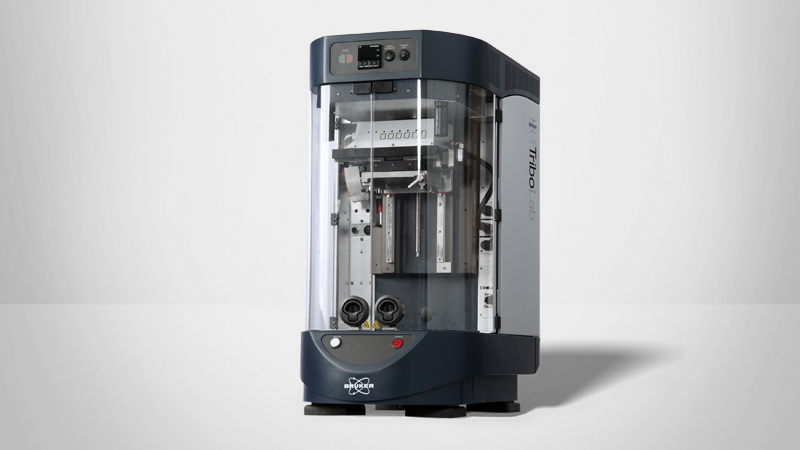High Frequency Reciprocating Rig Module
Screen Lubricating Materials More Efficiently
Bruker’s High Frequency Reciprocating Rig (HFRR) Module for the UMT TriboLab™ Mechanical Tester enables a versatile and cost-effective way to screen lubricants and materials at the benchtop scale. Traditionally, the testing of surfaces and lubricants on reciprocating systems, such as engines and linear compressors, has required the use of laboratory-scale tribometers prior to final component tests. Now, with the HFRR Module, samples can be tested economically to rank the performance of lubricants and surfaces under simulated conditions while monitoring small changes in friction. These tests perfectly simulate standard protocols, such as the ASTM D6245-17, allowing researchers and engineers to more easily develop top-performing materials and recipes.
Accelerate Comprehensive Lubricant Screening
Equipping UMT TriboLab with the HFFR Module solves many industry requirements that go beyond ASTM and similar protocols, providing high-precision data analysis under the unique conditions for each application. The module delivers high-precision friction data not only as an absolute number, but also allows users to identify small changes happening along the reciprocating stroke. The system’s combination of new hardware and software features adds unprecedented flexibility and ease of use, providing both a cost-effective and capability-expanding solution for the accelerated development of lubrication materials.
Perform Reciprocating Tests
To simulate reciprocating systems, one must select the elements that play important roles on the tribological system:
- Material and geometry of the tested samples
- Contact pressure between surfaces controlled by the load, geometry, and material of the contact surfaces
- Reciprocating frequency and stroke length that will direct the motion and velocity profiles
- Controlled temperature that will activate tribochemical events on the tested surfaces
Acquire and Analyze Data Quickly and Simply
The UMT TriboLab software allows users complete flexibility in how to analyze the data obtained from a fast reciprocating test. To calculate the COF the user can choose between two methods. The first is a simple method that uses a percentage of the top values of friction in each stroke. The second, more advanced method selects a percentage of points in the middle of the stroke. These and other easy-to-initiate software features give nearly unlimited customization to the tests for any particular application.
